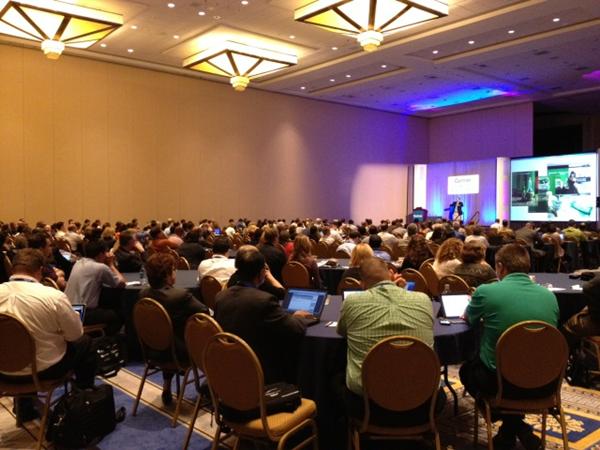
In my presentation at the Gartner 2012 PPM Summit, I discussed “Delivering What Matters: Focusing the PMO on the Big Picture.” I presented a number of themes, all of which, to my delight, aligned quite nicely with the collective keynotes and presentations at the conference. There’s no doubt that the role of the PMO is changing, and it was nice to see this issue play such a prominent role at the summit. Seven common themes of how you should rethink your PMO that emerged include…
- Embrace Multiple Approaches — Project management is no longer about a one-size-fits-all methodology. There’s a right time for an agile approach and a right time for a more directive waterfall approach. Even large programs can take the directive path or be more adaptive. An enlightened PMO will have guidelines for when to use which.
- Agile is Here to Stay — Especially for efforts with high uncertainty, or where exact requirements are not clearly definable, more and more organizations are moving to adaptive and iterative development methods. It’s reached a critical mass, and the PMO can no longer afford to stick its head in the sand concerning Agile. Equally, the PMO must be aware of the culture shift it requires and manage change accordingly.
- The PMO is a Vital Component of Managing Change — Constant change is the new normal. But when an organization has their vital information segregated across multiple spreadsheets and systems, it becomes nearly impossible to adjust the sails when the wind changes. The PMO is in a unique position to provide the knowledge, processes, and tools that support alignment and integration across strategy, operations, and finance. As such, it can no longer afford to keep a narrow focus on project execution methodology.
- The PMO Can Foster Innovation — To thrive in today’s dynamic environment, an organization needs to allow room for a number of higher risk innovation projects, within reason. The PMO can help create effective portfolio management and governance methods to aid the organization in achieving a balanced strategic portfolio of projects, products, and services.
- It’s Not Just About Projects Anymore — The handwriting is on the wall. Gartner’s saying it. Other industry analysts are saying it. And I’ve been saying it for a few years now. An organization is an ecosystem, and the best way to organize work and resources is by product, not project. That’s not to say you shouldn’t manage projects, but those projects must tie to products (internal and external). In other words, value definition lies with products. But don’t think of products as “hard goods and soft goods” as much as a certain set of functions, features, and capabilities that allows the end user or customer to function effectively, which takes us to our next item…
- Think in Terms of Capabilities — In the olden days (i.e. the last few decades), IT and other service delivery functions were focused on solutions. In the extreme, solutions were conceived with a misguided view of what the providers “thought” people wanted or needed. Now trends are showing a shift toward speaking to business and functional capabilities. You’re no longer implementing a software product; you’re implementing the ability to xyz (pick the function of your choice).In the context of portfolio management, you may be implementing the ability to capture ideas, filter demand, govern intake, prioritize investments, assess resource capacity, and so on. And in the context of software projects, you might be implementing the ability for the business or the end users to achieve some measurable benefit. The key is that projects (aligned with products) must deliver certain capabilities, which are tied to measurable outcomes, which takes us to…
- It’s the Outcomes, Stupid — At the PMO Symposium in Orlando late last year, and at the recent Gartner PPM Summit outcomes and benefits realization were prevalent themes. Outcomes, both at the business/functional level and at the enterprise/strategy level are how we measure the value delivered through optimal use of constrained resources and funding.Indeed, there were a number of sessions at the Summit that talked about value mapping, and Mark Langley, President and CEO of PMI, spoke of the importance of benefits realization. Astute PMO leaders are quickly recognizing the need to bridge organizational gaps, and promote outcomes-based and capabilities-based thinking across all sectors. This is where the PMO can earn their proverbial seat at the table.
Speaking of seats at the table, in my white paper, A Seat at the Table: Making your PMO More Relevant in Times of Change, I discuss many of the above themes including the PMO as a change agent and integrator; the shift to capability and outcome-based thinking; and the importance of thinking of the organization as an ecosystem (bridging projects, products, services, and more).
It’s refreshing to see the industry converge on these themes, as was definitely visible at Gartner PPM Summit. I’d love to hear your thoughts. Is your organization recognizing any of these shifts, and if so, what steps are being taken to get ready?




